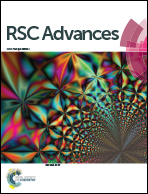High performance tunable piezoresistive pressure sensor based on direct contact between printed graphene nanoplatelet composite layers
Abstract
This article details the development of a thin film piezoresistive screen printed pressure sensor on a flexible substrate using a composite ink based on functionalised graphene nanoplatelets (GNPs). The sensor operates through direct interfacial contact between two distinct films of the composite ink deposited over conductive substrates, without requiring any intermediate gap through spacers. The sensors showed consistent results and sensitivity forces ranging between 10 N to 2000 N. The piezoresistive range of the sensor can be tuned with the number of layers deposited per side.



 Please wait while we load your content...
Please wait while we load your content...